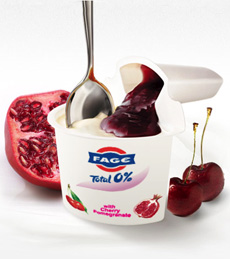|

Delicious Vegan Ginger Chicken. Photo
courtesy Vegetarian Plus.
|
|
If you’re not already a flexitarian, pescatarian or vegetarian, a vegan diet may seem extreme. Give up all animal products, including dairy, eggs and honey?
If that sounds like too much sacrifice, you should still consider choosing it for a day or two each week. It’s not only healthy, but it’s also painless. Just browse through a vegan cookbook and see all the delicious things you can have—from chili, pasta, and stir-frys to hummus, tabbouleh and many other global favorites.
Typically, people adopt the vegan lifestyle for compassionate reasons, wishing no harm to animals.
But concerned environmentalists have joined in as well, on the grounds that the planet’s livestock are the number one contributor to global warming.*
If you feel compassion for animals or for the planet, the international recipes from Vegetarian Plus frozen entrées are so delicious that eating vegan one or two days a week is a snap—no cooking required (a microwave is not “cooking”).
|
The Vegan Ginger Chicken, Kung Pao Chicken, Orange Chicken, Chicken Tikka Masala and Lamb Vindaloo are so good that we prefer them to alternatives with real meat.
Read the full review and promise yourself that you’ll try them. The review also contains a list of vegan celebrities. Would you believe that Mike Tyson is a vegan?
VEGAN, VEGETARIAN, ETC.: WHAT’S THE DIFFERENCE?
In alphabetical order:
A flexitarian is a person who eats mainly vegetarian food, but makes occasional exceptions for social, pragmatic, cultural or nutritional reasons. Flexitarians may occasionally eat meat and/or other animal products. According to the Vegetarian Research Group, about 3% of American adults are true vegetarians who say they never eat meat, fish or poultry. But at least 10% of adults consider themselves vegetarians, even though they eat fish or chicken occasionally.
A pescatarian or pesco-vegetarianism follows a diet that includes fish or other seafood, but not the flesh of other animals. Most pescetarians maintain a lacto-ovo vegetarian (see below) diet with the addition of fish and shellfish.
Vegetarians don’t eat meat or other animal products. There are different degrees of vegetarianism.
The vegan is a total vegetarian who will eat only foods from plants: fruits, vegetables, grains, legumes (dried beans and peas), nuts and seeds. Vegans will not eat any animal by-products, including honey, lard, gelatin or cochineal, a food coloring.
Lactovegetarians eat plant foods plus cheese and other dairy products, but exclude red meat, poultry, fish and eggs.
Ovo-lactovegetarians (also called lacto-ovovegetarians) exclude all of those items except eggs. Semi-vegetarians do not eat red meat but will eat chicken and fish along with dairy products and eggs. (Source: http://www.health.gov.)
If you eat everything, you’re an omnivore.
And there’s more! Our December 2022 updates have an environmental focus:
A climatarian is someone who eats sustainably: a climate-friendly, nature-friendly, and healthy diet. It implies less packaging waste and more recyclable packaging as well.
A regenivore is someone who wants food from companies that are actively healing the planet. Beyond simply sustaining the environment, the focus is on carbon-reducing agriculture, more rigorous animal welfare policies, and equitable treatment of the people who grow and process food.
______________
*Manure produces methane, a greenhouse gas. Cow belching is another culprit. There is more global warming from methane than from vehicles that burn gasoline.
CHECK OUT WHAT’S HAPPENING ON OUR HOME PAGE, THENIBBLE.COM.
|







